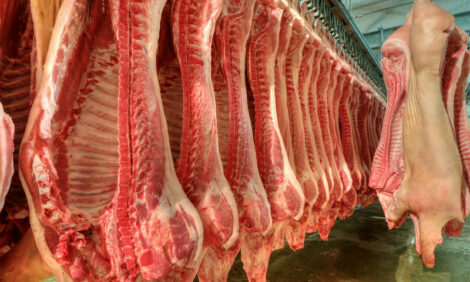



CME: Significant Discount to USDA Hog Price
US - Livestock producers, packers and end users are trying to adjust now that all of the USDA market reporting they had come to depend upon has stopped, write Steve Meyer and Len Steiner.As noted in our previous reports, packers have been working closely with producers and customers to establish the parameters of pricing product that in the past was done on a formula basis. For the most part, those formulas were benchmarked off USDA reports and now alternatives are being sought.
Price discovery has always been challenging. In recent years, however, thanks to congressional mandates and the expansion of USDA’s ability to collect market information, price discovery for many participants became almost costless, sometimes an afterthought. After all, a buyer no longer had to work the phones, call various suppliers and keep the ear to the ground for any change in pricing sentiment.
Smaller buyers that lacked purchasing power often felt they could not get the same deal as those that could be in the market for multiple truckloads a week. The daily sheet offered an easy way out and purchasing decisions that in the past would have taken hours, maybe a couple of days to conclude, now can be done in minutes. The buyer calls the order in, prices it off the sheet and then goes on to deal with other issues. It is no wonder that the bulk of beef and pork products traded each day is now priced on a formula basis rather than negotiated.
In the case of beef products, USDA data shows that ten years ago almost 70 per cent of all beef traded in a given day was done on a negotiated basis. This year, the percentage of beef traded on a negotiated basis has dropped under 40 per cent. We don't know what percentage of pork is traded on a formula basis since USDA only recently started the Mandatory Price Reporting for pork and the formulated sales have yet to be reported.
However, we do have plenty of information on formula marketing arrangements for hogs. The percentage of hogs traded on a negotiated basis has gone from about 17 per cent in 2004 to about 7 per cent today. The rest of the hogs marketed were sold on some kind of market formula, using either pork or hog benchmarks tied to some USDA report.
Without the USDA market reporting mechanism, price discovery in the hog complex has been frozen. While some market reports exist, one needs to be careful and take into account the inherent structural pricing difference between them and the USDA values. Case in point is the pork cutout calculation from Urner Barry, one of the private market reporters.
As you can see in the attached chart, the UB hog carcass calculations reflect a significant discount to the USDA price. This is because the current USDA hog cutout calculation includes more items than the Urner Barry sheet. Specific pork item prices need to be examined independently. Since the beginning of the year, the UB cutout has averaged about $4/cwt below the USDA cutout. UB pork cutout on Thursday was quoted at $97.70/cwt, implying overall wholesale pork prices have changed little in the last few days.

This makes sense since many packers have opted to price product off the last USDA quote on Monday and the ongoing uncertainty has for the most part frozen wholesale prices. Hog prices declined sharply on Monday following the Hogs and Pigs report and pork packer margins are now quite a bit better than they were for much of September. Packers will likely get more pushback in the coming days, however, as a larger portion of their production will likely have to be negotiated. And this could impact the price packers are willing to offer for hogs. Saturday slaughter remains key.








